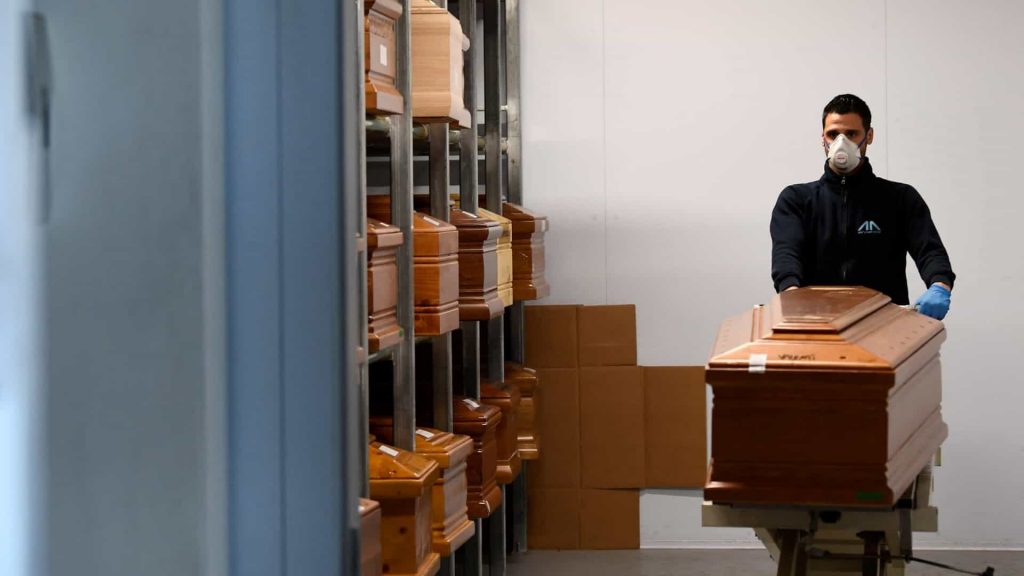RIO DE JANEIRO, BRAZIL – The number of deaths by Covid-19 in Brazil has been doubling every five days. In the United States, this doubling occurs every six days, and every eight days in Italy and Spain.
The data is provided in the latest technical report from ‘MonitoraCovid-19’, a Fiocruz system that collects data on the novel coronavirus pandemic, and shows the rate at which the epidemic is spreading in Brazil.
“Our current situation is worse than in Italy, Spain and the United States. That’s why the number of deaths is doubling within a shorter period of time,” said epidemiologist Diego Xavier, a researcher at Fiocruz’s Institute for Health Communication and Information (ICICT) and one of the people in charge of the study.
In addition to epidemiologists, geographers and statisticians from the ICICT/Fiocruz have been using the tool to produce assessments on the progress of the disease.

“Data on deaths are more reliable than case data to gauge the progress of the epidemic,” said Xavier. “This is due to the fact that, in the case of deaths, even the diagnosis not made during the patient’s clinical course can be investigated. In addition, the clinical situation of the patient who dies is more evident when compared to cases that may be asymptomatic and mild”.
Inland
The technical report also alerts to the fact that the epidemic is reaching smaller municipalities in the country rapidly. Among the cities with over 500,000 inhabitants, all of them now report cases of the disease.
In municipalities with a population between 50,000 and 100,000 inhabitants, 59.6 percent report Covid-19 cases. Among municipalities with a population between 20,000 and 50,000 it is 25.8 percent, 11.1 percent of those with a population between 10,000 and 20,000, and 4.1 percent of those with a population of up to 10,000.
According to the epidemiologist, the decision to suspend social isolation in municipalities that do not report any cases of the disease is extremely reckless, particularly at a time of increased speed in the spread of the disease. “They are making a very risky decision,” he said. The researcher noted that even if there is no official record, the disease may already be in circulation.
In addition, smaller cities are linked to larger ones, and it is inevitable that the virus reaches them. “As the disease advances inland and reaches smaller cities, the demand for more specialized health services, such as ICUs and ventilators also grows,” he notes. “But these smaller cities, in their majority, do not possess these health resources, so they will have to refer their patients to larger centers, which now have beds, equipment and health care workers in distress,” warned Xavier.
Example
With 14,000 inhabitants, two confirmed cases and one death, Santa Branca, in the interior of the state of São Paulo, was until yesterday the smallest city in São Paulo with the highest incidence of coronavirus. By Tuesday, 239 municipalities in the interior of São Paulo (out of a total of 645) had already recorded cases of the disease. Most of them had only one infection record, according to data released by the state government.
The mayor of Santa Branca, Celso Simão Leite, says the virus is not in circulation in the small town in the Paraíba River valley. “These cases are not ours, although they are residents here.” He said the two people who contracted the virus are a couple who have lived in Santa Branca for a long time, but the infection occurred in a hospital in São Paulo, where the 71-year-old woman was undergoing cancer treatment, according to the mayor. She eventually died. “Her husband has returned to Santa Branca and is in strict quarantine.”
According to the mayor, the burial took place in the local cemetery, with a closed casket and the presence of few relatives, in a fast ritual. “It didn’t last half an hour and all the care was taken, but in a small town, used to the traditional wake, this is shocking.” Leite says there is pressure for the reopening of trade and the return of tourists, but chose to maintain quarantine with the support of the majority of the population.
“The city has a hospital with four beds equipped with ventilators, but the urgent cases go to the reference hospital in Jacareí, 15 kilometers away,” says Leite. Yesterday, all beds were vacant, which he credits to fear of the coronavirus. “Our average hospital attendance has dropped from 190 to 20 patients a day. Out of fear, people only seek the hospital as a last resort.”
Source: O Estado de S. Paulo

